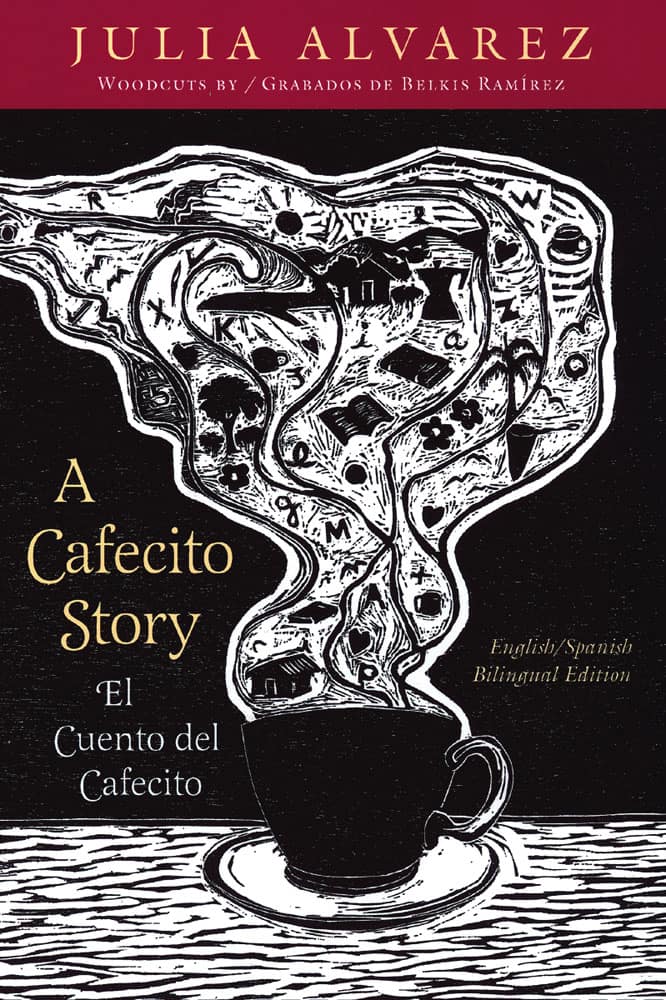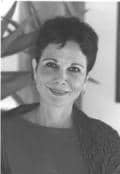A Cafecito Story / El cuento del cafecito
A Cafecito Story is a story of love, coffee, birds and hope. It is a beautifully written eco-fable by best-selling author Julia Alvarez. Based on her and her husband’s experiences trying to reclaim a small coffee farm in her native Dominican Republic, A Cafecito Story shows how the return to the traditional methods of shade-grown coffee can rehabilitate and rejuvenate the landscape and human culture, while at the same time preserving vital winter habitat for threatened songbirds.
Not a political or environmental polemic, A Cafecito Story is instead a poetic, modern fable about human beings at their best. The challenge of producing coffee is a remarkable test of our ability to live more sustainably, caring for the land, growers, and consumers in an enlightened and just way. Written with Julia Alvarez’s deft touch, this is a story that stimulates while it comforts, waking the mind and warming the soul like the first cup of morning coffee. Indeed, this story is best read with a strong cup of organic, shade-grown, fresh-brewed coffee.
Reviews and Praise
Review: "A Better Cup of Coffee" HippoPress Manchester-
When Joe stops at the roadside barra outside his Dominican vacation resort, he finds the local coffee comes in a single, perfect denomination, "a dollhouse-sized cup filled with delicious, dark brew that leaves stains on the cup." He takes a sip and tastes a coffee that will change his life forever.Joe is the main character in the adult fable/parable A Cafecito Story by award-winning Vermont novelist Julia Alvarez (How the Garcia Girls Lost Their Accents (1990), In the Time of Butterflies (1993), and In the Name of Salom© (2000)). Illustrated with wonderful, imaginative woodcuts by celebrated Dominican artist Belkis Ramirez, the book comes in three parts: The "Cafecito Story" of the books title; an afterward by Bill Eichner, Alvarez's spouse and co-owner of their organic coffee farm; and a surprisingly rich and sensible resource section.
"The Cafecito Story" unfolds through the eyes of Joe, a Nebraska native with farming in his blood. Joel feels increasingly displaced from the natural world, so he takes a getaway vacation to the Dominican Republic.
What's so special about the cafecito he finds there? The beans were grown in the traditional way, on a shaded farm in the Dominican's mountainous interior. When Joe visits a coffee farm in the hills, the farmer Miguel tells him that the old ways are fast disappearing as farmers rent their plots to "La compania" to grow coffee quickly in full son, for better short-term yields. The result is the destruction of a sustainable way of life through deforested mountains, depleted soils, and pesticides and chemical fertilizers that wash into the rivers. And for the coffee drinker half a world away, notes Miguel, "The sprayed coffee tastes just as good if you are tasting only with your mouth. But it fills you with the poison swimming around in that dark cup of disappointment."
I'm drinking a cup of certified organic coffee as I write this. How could I drink anything else? This book is meant to be more than light summer reading. It's meant to change your thinking, and it's likely that it will. Eichner and Alvarez's real-life story picks up where the fable leaves off. Eichner writes in the afterward about Alta Gracia, their organic coffee farm established with them campesino neighbors in the Dominican Republic. Where the fiction is simple and prose sometimes choppy, the afterward is much more lyrical. It clearly conveys the rewards of helping to renew a landscape scorched by agribusiness, the joys of seeing the songbirds return and the literacy rate rise, and the fulfillment in transforming the dream of sustainability into a reality.
Like a young tree, the parable and the real-life story intertwine and take root in the reader. In part three, an extensive and imaginative list of resources will help coffee drinkers participate in fair trade, a set of marketplace practices that create a better future for half a million family coffee farmers around the world.
In an age when we often want to make a difference but are uncertain of where to begin, drinking a better cup of coffee doesn't seem like much to ask. After all, writers Eichner, "Anyone can begin by planting a tree, or a hundred trees…. The future does depend on each cup, on each small choice we make."
Eichner and Alvarez manage to tell a complex story with global consequences without being preachy of heavy-handed. They intend to inspire, and they do.







